Concepts of transactional analysis to support a transformative mediation style
The transaction-analytical view of man, the basic attitudes and the drama triangle and a few more helpful concepts.
Transformative mediation is defined as a process in which the third party supports the conflict parties in changing their conflict interaction from negative and destructive to positive and constructive conflict communication: Instead of discussing points of contention, the aim is to become.
This targeted transformation, the change in crisis communication, is made possible by the fact that the mediator uses the current communication to create so-called Empowerment and Recognition changes stimulates.
- Empowerment changes enable the parties to recognise their strengths again and to act with self-confidence, which regularly begins to crumble in conflicts.
- Recognition changes On the other hand, the participants are able to recognise and take seriously the interests and needs not only of themselves but also of others.
The concepts of transactional analysis can help with this mediating work. Three concepts are described in detail below and others are listed in tabular form.
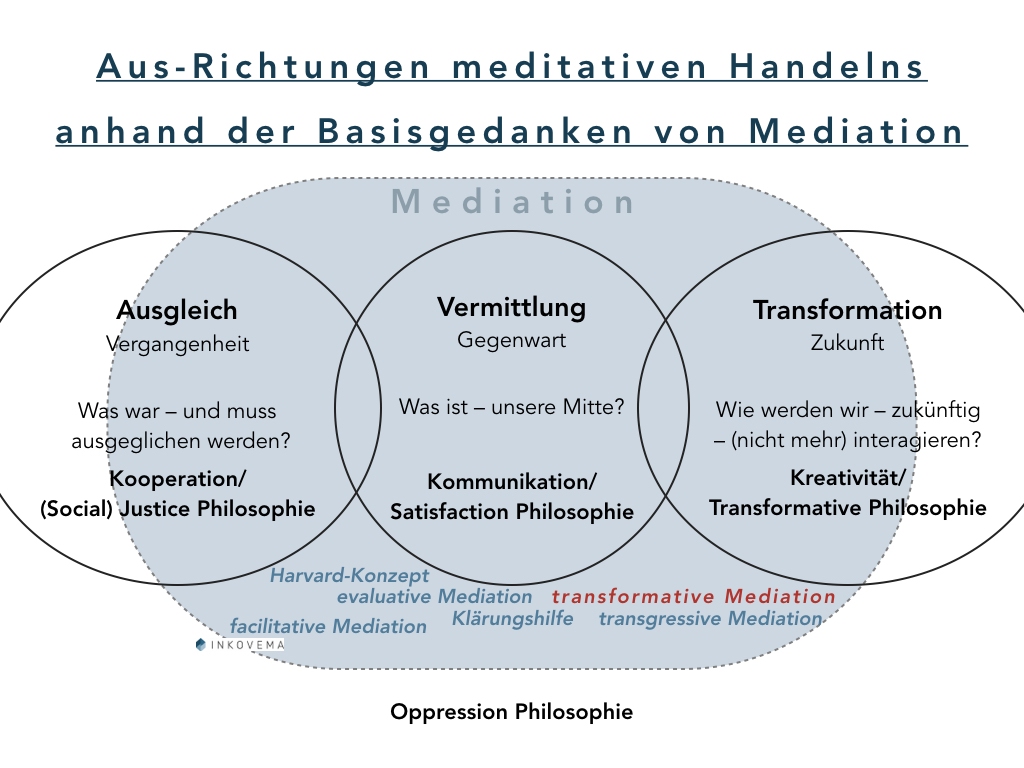
Transactional analysis
Transactional analysis (TA) is a psychologically based theory of human personality. It was founded in the middle of the 20th century by the American psychiatrist Eric Berne. Its aim is to present psychological findings in vivid concepts that can be used to reflect, analyse and shape individual and social reality.
1st concept: The human image of transactional analysis
The concept of the human being developed by transactional analysis over the past 50 years and made fruitful for counselling work (also in conflict situations) forms the basis of transactional analytical work and can support transformative mediation in its aim to stimulate and support empowerment and recognition changes.
The core element of the transaction-analytical view of human nature is the Human autonomy, understood initially as a person's fundamental freedom of choice and decision to shape their life. As an individual (= indivisible unit), this also gives rise to a need to make decisions. This is entirely in line with transformative mediation.
The transaction-analytical view of human nature Four interlocking basic assumptions about people inherent.
- The people are fine: The way we humans are is fine and we are born with dispositions that allow us to be fundamentally cooperative and social. Nevertheless, it is appropriate to point out the cultural development of violence within social groups, for example, which makes it clear that this view is more the result of a long, socialising process and by no means "God-given or natural“. Every human being is capable of doing bad things, of hurting, torturing and even killing others. However, all of this concerns his behaviour. However, a person does not lose their value as a human being as a result (see, for example, Article 1 (3) of the Basic Law, prohibition of the death penalty and life imprisonment). He remains a person worthy of respect - and fundamentally capable of adapting his behaviour to social requirements.
- People feel, think and act accordingly: As long as there are no serious physical injuries, every person has the ability to feel, think and act accordingly. This assumption is reflected, for example, in the – theory of ego states based on Paul Federn. The stimulation of the individual dimensions, mediated via the sensory organs, enables people to experience the world, learn through it and develop within it.
- People can decide and revoke their decisions: The possibility and ability to make decisions is a unifying element of transactional analysis concepts that has its origins in the concept of the human being - people decide (consciously or unconsciously) about their thoughts, feelings and behaviour. This idea is fundamental to mediative conflict management, because otherwise the mediator's work would be "pointless".
- People strive for autonomy: The human striving for autonomy, as also postulated by transformative mediation, presents itself as the striving for actualisation and revitalisation of self-efficacy and freedom of choice, as a perceptible possibility to experience oneself feeling and thinking in one's autonomy. This is quite consistent, since in the conceptualisation of transactional analysis, life seems to be above all decision-making. And such decisions are an expression of both one's own freedom ("auto") and one's own boundedness ("nomos“).
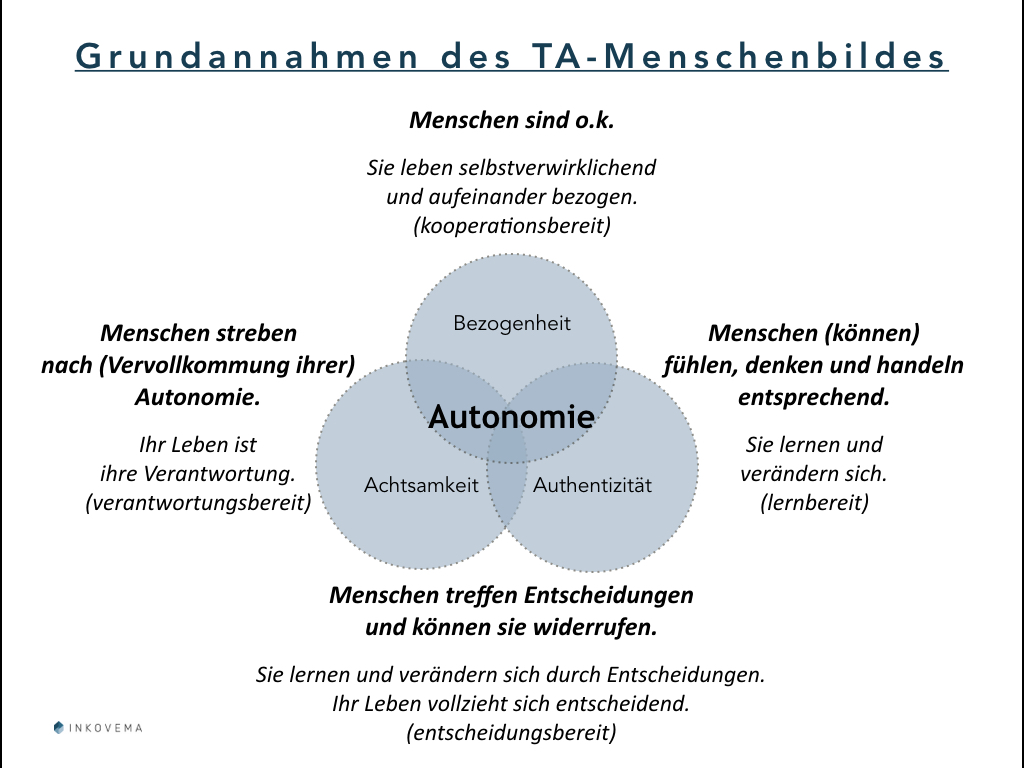
2nd concept: Basic settings
The basis for an effective working relationship (also in mediation) and dialogue is the fundamental inner attitude with which people encounter each other. If the communication partners have "built up" an attitude in which they perceive themselves and others and respect them as autonomous and equal individuals, they can express themselves fully (self-realisation). Such an attitude is inviting and "disarming". People with this attitude and approach towards themselves and others neither look down on others nor look up to them.
The idea of basic attitudes conceptualises the fundamental possibilities of such inner attitudes. It organises the fundamental convictions that people form about themselves, others and the world itself into a four-cell grid. This model, also known as ok-area (Stewart/Joines) or ok-Corral (Ernst) or Windows on the World (Hay), is used explicitly to clarify conflict communication. Conflicts in which both parties argue about being right can be identified and explained just as clearly as conflicts in which the parties argue about who has to suffer more (and is therefore entitled to claim care, consideration or other things from the other). It enables very specific feelings, thoughts and behaviours to be classified and localised in a simple and effective way and allows them to be understood - often from a new perspective. The following relevant categorisations can be made as an overview:
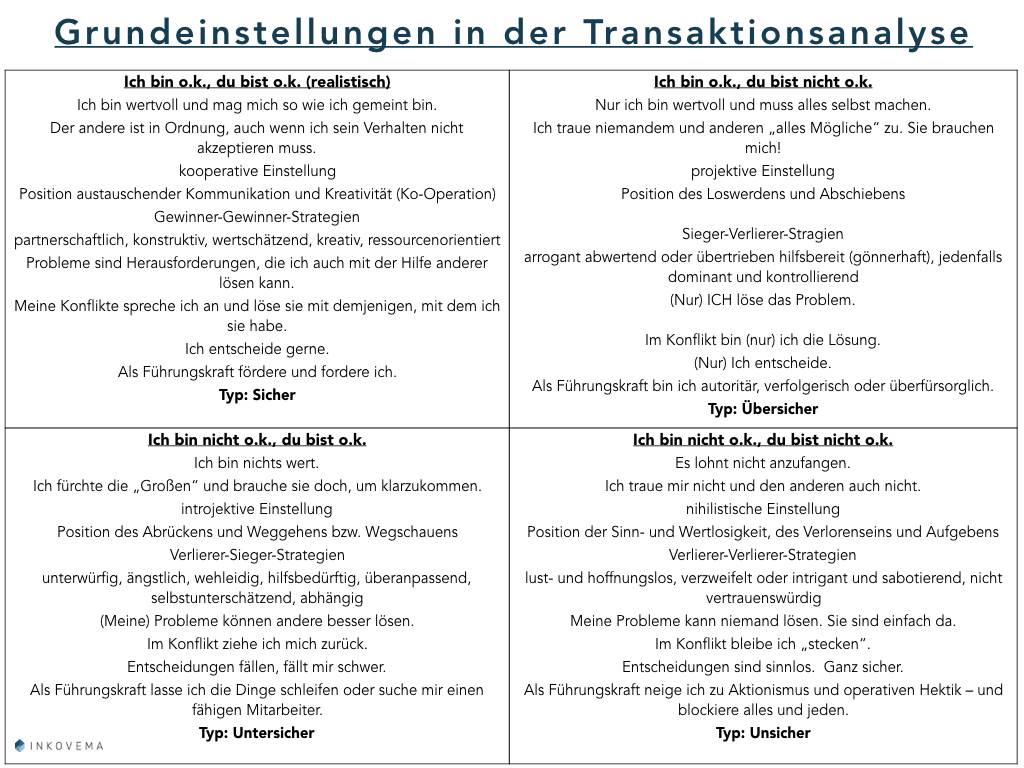
For the Transformative Mediator, the grid can on the one hand be for preparation his work, especially for reflection of its own basic attitude towards the mediants and their conflict communication. Secondly, the grid can be used to gain a relatively quick and practical initial impression of the Communication dynamics make. Experience shows that a frequent conflict dynamic is that the initial relationship or working contract between the "underconfident" and the "overconfident" is consciously or unconsciously questioned - and work is done on a change, addition, transformation or, in short, on a transformation, but in a destructive way. The model of basic attitudes enables the mediator working in a transformative way to see through this, to form corresponding hypotheses, to test them or to work explicitly with the grid.
3rd concept: Drama triangle
The drama triangle is a graphic concept that illustrates the escalating, destructive dynamics of conflicts in an almost archetypal way. The original concept comes from Steven Karpman. It is made up of three conflict-constituting psychological roles (not people!). The drama triangle can be used in mediation to illustrate and clarify constructive ideas and destructive dynamics in terms of content and (geo)graphics. For mediations, it can be combined with the outlined human image of transactional analysis and (transformative) mediation, which can be recognised by the constructive - typically round - Responsibility table happens.
In the drama triangle, there are the psychological roles of "persecutor", "victim" and "rescuer". "Role-managed" people in the drama triangle act in a stereotypical, inauthentic way, in a "familiar" manner that leaves no room for flexible, appropriate behaviour. They think, feel and act in a way that they have already established elsewhere and at a different time. It hardly seems possible for dialogue partners to engage in communicative contact and exchange. Conversations feel as if "a soundboard has cracked". What are the backgrounds and (unconscious) motives for these psychological roles?

The Pursuer role is favoured by people who belittle others communicatively, criticise them excessively, (want to) punish them or even hurt them. Criticism, accusation and condemnation are the favoured, constantly updated topics of communication; other people are criticised and "picked on". This corresponds to the typical form of establishing and shaping contact when people act in the role of persecutor; their basic attitude is then "I'm OK, you're not OK". Typically, people who favour the persecutor role cultivate substitute feelings (....) of anger and rage. In all of this, their own need for closeness and intimacy (familiarity!) is devalued and disregarded on the one hand and the value and dignity of the other on the other.
(Communicative) Topic of the victim role is one's own helplessness and the (presumed) rejection by others. This role is filled not only with open helplessness, but also with alluring shyness, seductive childishness or supposed ignorance and even clumsy awkwardness. In the victim role, people have the basic attitude "I'm not OK, you're OK", sometimes also "I'm not OK, you're not OK". Substitute feelings are often anxiety and sadness. People devalue their problem-solving skills or simply ignore them.
Rescuer role topics are liberation and redemption, security and comfort. In terms of communication, a certain omniscience is often offered (at least as far as the victim's problems are concerned), and (re-)acted and sometimes maltreated with sometimes unspeakable pity, expressions of concern and an almost limitless willingness to help, but also with unsolicited advice and acts of rescue. The rescuer role - like the persecutor role(!) - is fulfilled on the basis of "I'm OK, you're not OK" in the social field. This becomes clear in the devaluations towards the supposed and identified victims. Their problem-solving skills are ignored, ridiculed or simply but rigorously devalued and disregarded. This is only logical, because rescuers need victims in order to be rescuers. They fixate (their) victims in terms of communication and relationships so that they can remain rescuers. Sometimes there is no other way to make contact with people who favour the rescuer role than by showing a "victim ID card". In the rescuer role, their own need for equal (and therefore equally emotionally risky) contact is ignored. Often, substitute feelings of self-important superiority and groundless confidence in finding a solution precede the "actual" feelings of fear and insecurity, but also sadness and anger. Rescuers are ultimately not the mirror images of the victims, but of the persecutors.
In mediation, the concept can be presented briefly at the appropriate point(!) and the parties involved can quickly develop an inner picture of their situation. It clearly shows that sitting down together (at a round table) is conducive to getting out of the frequently perceived escalation. The graphic concept may help to use the development from the drama triangle to the round mediation table to clarify and locate the common centre of responsibility, not least by linking the basic mediative ideas with the concerns of transactional analysis. This concept also makes it clear that transformation occurs primarily by accompanying the communication process rather than by prescribing one.
Overview of other compatible TA concepts
Transactional analysis also has other concepts and models, some of which are very context-specific, that can be utilised and integrated in transformative mediation. They are suitable for both training and mediation practice
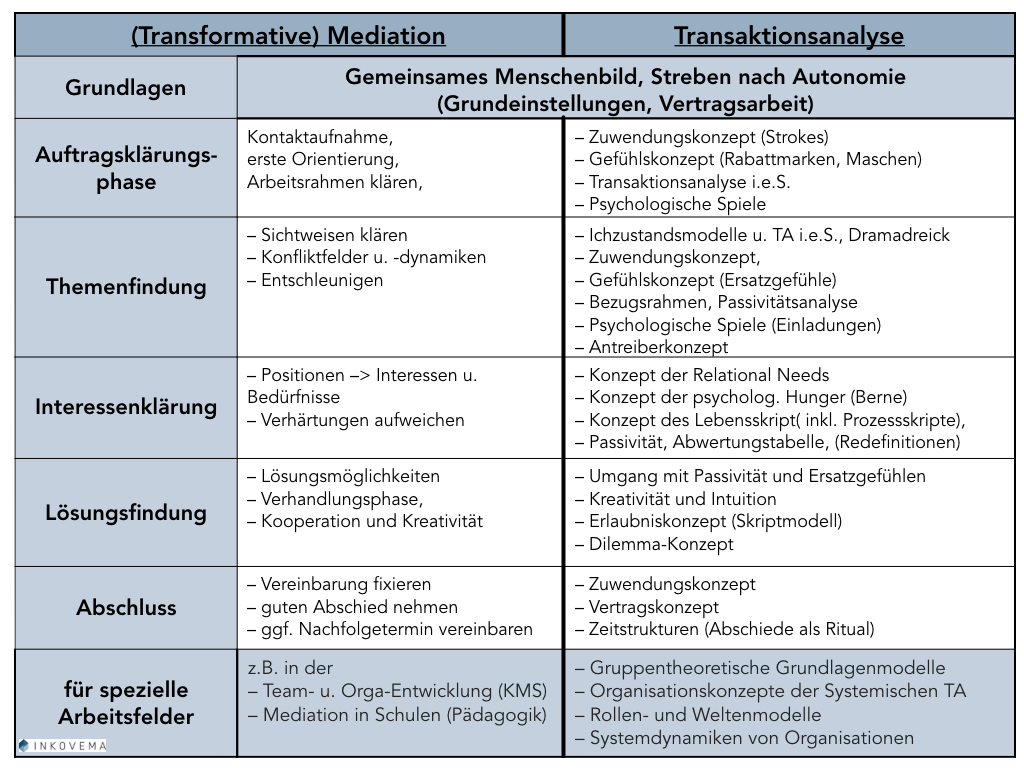


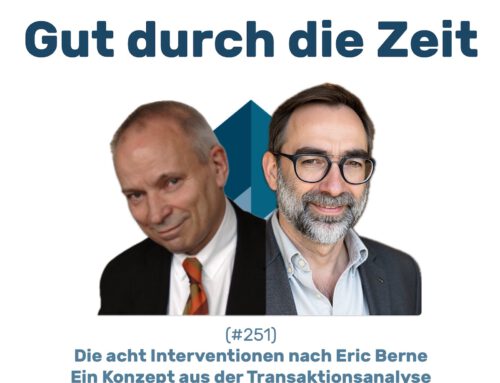
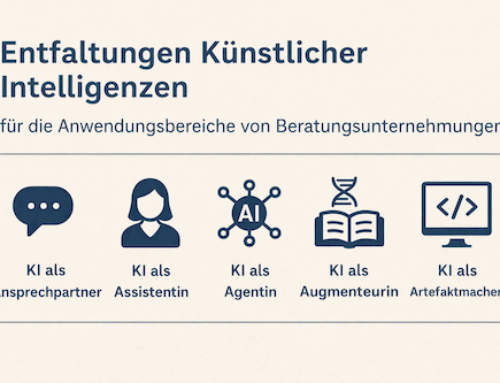
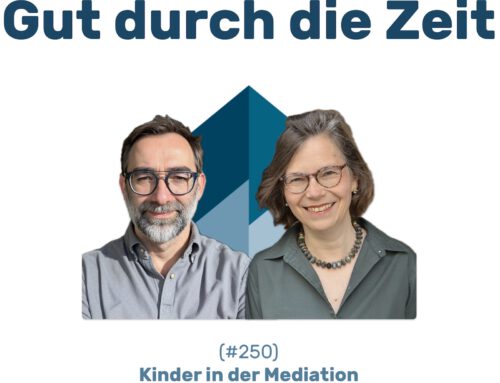
Leave A Comment